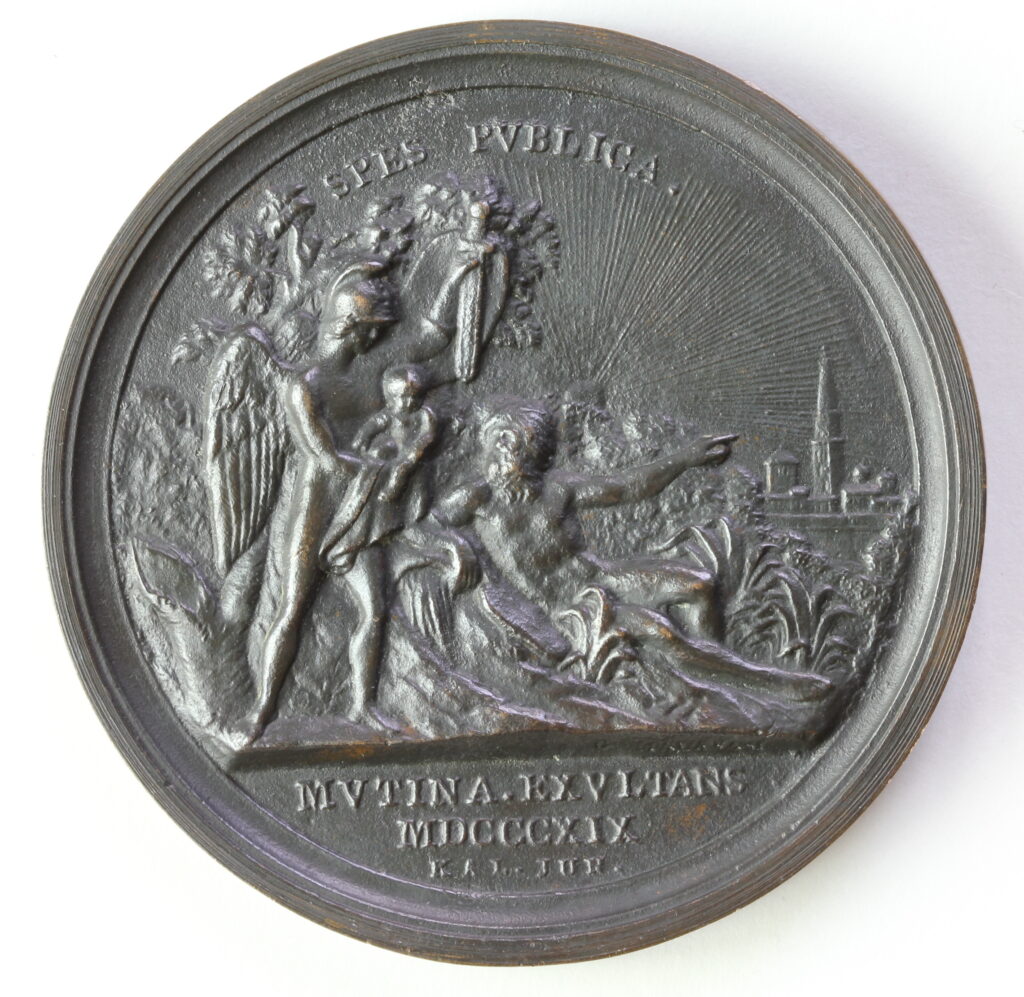Since antiquity, the commemorative medal was a way to convey the cult of the Sovereign’s personality and to diffuse a message of power and strength. On the one hand, it showed the physical portrait of the ruler and indications of his titles, while on the other it depicted through images the moral, civil and political qualities he wished to communicate to the world or celebrated particular events such as, in this case, the birth of the eldest son and future heir Francesco Geminiano of Austria-Este born in Modena on 1 July 1819.
On the recto of the medal are centrally portrayed the profiles of Francesco IV, in the foreground, and Maria Beatrice of Savoia, both facing right. Around their effigies is the inscription ‘FRANCISCO. IV. ATESTIO. ET. MARIAE. BEATRICI. CONJVG. OO. PP.’ to correctly identify the two figures. Francesco IV is represented with short hair and a thick sideburn, while the face is characterised by precise physiognomic details. The Duchess wears a crown in her gathered hair, while her face, especially in the features of the nose and mouth, appears less precisely outlined.
The verso depicts a scene rich in depictions and symbolic meanings. On the left is a tree which, although broken and missing a portion of its trunk, throws out new branches symbolising the continuation of life. Next to it stands the Este Genius, he holds the Este Prince with his right arm, while with his left he holds a sword and shield to protect the child. In the centre is a male figure, identified as the Panaro river, who turns his gaze to the newborn child, pointing to the city of Modena, which can be recognised in the background on the right by the Ghirlandina tower, over which shines a radiant sun emblem of good luck, whose fine rays occupy the entire background. At the top is the inscription ‘SPES. PVBLICA’, while below the allegorical scene ‘MUTINA. EXULTANS / MDCCCXIX / KAL(ENDAE). IVN(II)”, finally on the line of the exergue is the signature “G(IUSEPPE). MALAVASI’. Following the closure of the Modena mint in 1796, the medal was made by casting directly by the designer and creator of the medal, Giuseppe Malavasi, helped by Giulio Besini and, for the casting, by Giovanni Grotolini of Senigallia.








